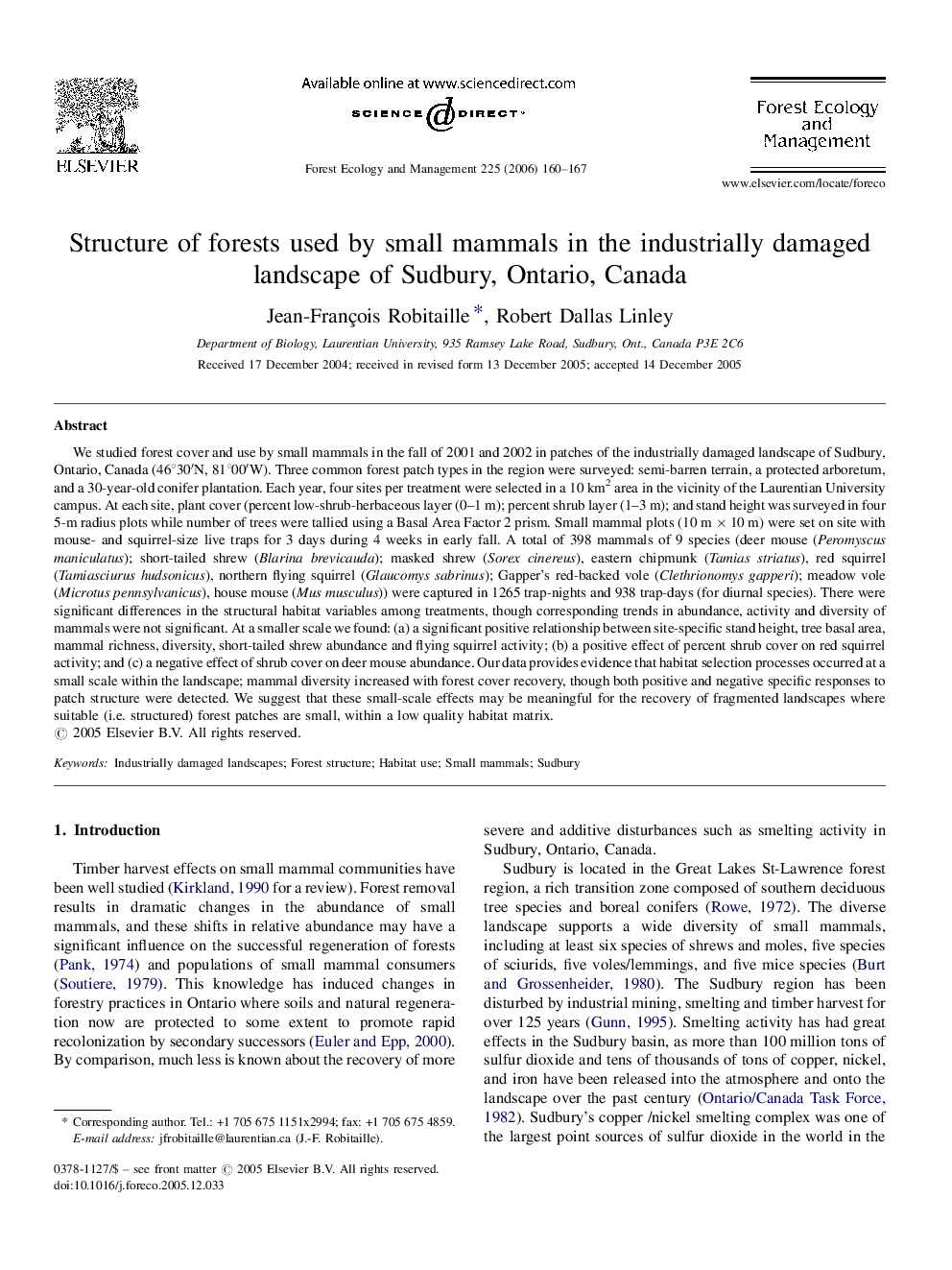| کد مقاله | کد نشریه | سال انتشار | مقاله انگلیسی | نسخه تمام متن |
|---|---|---|---|---|
| 91014 | 159424 | 2006 | 8 صفحه PDF | دانلود رایگان |

We studied forest cover and use by small mammals in the fall of 2001 and 2002 in patches of the industrially damaged landscape of Sudbury, Ontario, Canada (46°30′N, 81°00′W). Three common forest patch types in the region were surveyed: semi-barren terrain, a protected arboretum, and a 30-year-old conifer plantation. Each year, four sites per treatment were selected in a 10 km2 area in the vicinity of the Laurentian University campus. At each site, plant cover (percent low-shrub-herbaceous layer (0–1 m); percent shrub layer (1–3 m); and stand height was surveyed in four 5-m radius plots while number of trees were tallied using a Basal Area Factor 2 prism. Small mammal plots (10 m × 10 m) were set on site with mouse- and squirrel-size live traps for 3 days during 4 weeks in early fall. A total of 398 mammals of 9 species (deer mouse (Peromyscus maniculatus); short-tailed shrew (Blarina brevicauda); masked shrew (Sorex cinereus), eastern chipmunk (Tamias striatus), red squirrel (Tamiasciurus hudsonicus), northern flying squirrel (Glaucomys sabrinus); Gapper's red-backed vole (Clethrionomys gapperi); meadow vole (Microtus pennsylvanicus), house mouse (Mus musculus)) were captured in 1265 trap-nights and 938 trap-days (for diurnal species). There were significant differences in the structural habitat variables among treatments, though corresponding trends in abundance, activity and diversity of mammals were not significant. At a smaller scale we found: (a) a significant positive relationship between site-specific stand height, tree basal area, mammal richness, diversity, short-tailed shrew abundance and flying squirrel activity; (b) a positive effect of percent shrub cover on red squirrel activity; and (c) a negative effect of shrub cover on deer mouse abundance. Our data provides evidence that habitat selection processes occurred at a small scale within the landscape; mammal diversity increased with forest cover recovery, though both positive and negative specific responses to patch structure were detected. We suggest that these small-scale effects may be meaningful for the recovery of fragmented landscapes where suitable (i.e. structured) forest patches are small, within a low quality habitat matrix.
Journal: Forest Ecology and Management - Volume 225, Issues 1–3, 15 April 2006, Pages 160–167